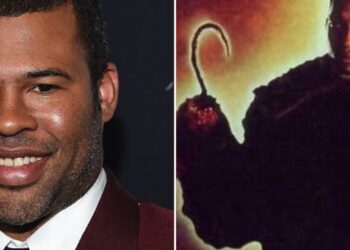With the dreamlike Daughters of the Dust, Julie Dash became the first Black female film director to have a picture broadcast worldwide in 1991. Thirty years later, we’ve reached another another landmark. Nia DaCosta’s new version on Candyman finally hit theaters this weekend, and it rocketed straight to the top of the domestic box office chart, grossing $23 million. It’s a strong start, especially for a film set in the midst of a resurgent pandemic. It did, however, make history.
According to IndieWire, DaCosta’s Candyman is the first film made by a Black female filmmaker to reach #1. A few close calls have occurred. Selma and A Wrinkle in Time, both directed by Ava DuVernay, came in second place. Gina Prince-Love Blythewood’s & Basketball, from 1998, is similar (who would go on to The Old Guard, which Netflix claimed was one of their biggest streaming hits).
The top slot, however, went to a horror reboot sequel. DaCosta’s Candyman does what a lot of revivals these days do: it offers a direct sequel to an original while ignoring all the previous sequels. (Halloween by David Gordon Green comes to mind.) Tony Todd’s titular boogeyman, first seen in the 1992 original about a malevolent spirit hiding in gentrifying Chicago, is back. DaCosta has subsequently been recruited to direct The Marvels, the sequel to Captain Marvel, so there’s a good chance she’ll be directing another #1.
Female filmmakers were very common in the early days of cinema. Mabel Norman, an actress and director, was the first to direct Charles Chaplin as the Tramp, while Lois Weber established her own company. Beginning in the 1930s, Hollywood studios effectively banned women from directing, despite the fact that females were frequently engaged as screenwriters and other behind-the-scenes roles. Women have gradually reclaimed the role they formerly held in the sector over the last few decades. Meanwhile, until 1969’s The Learning Tree, directed by photojournalist Gordon Parks, no major Hollywood studio employed a Black director. Even after that, there have been far too few Black directors who have landed the top job. To put it another way, the times,







